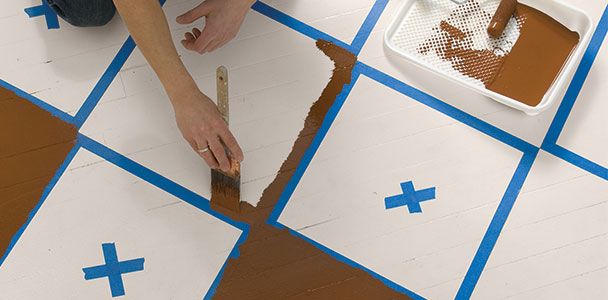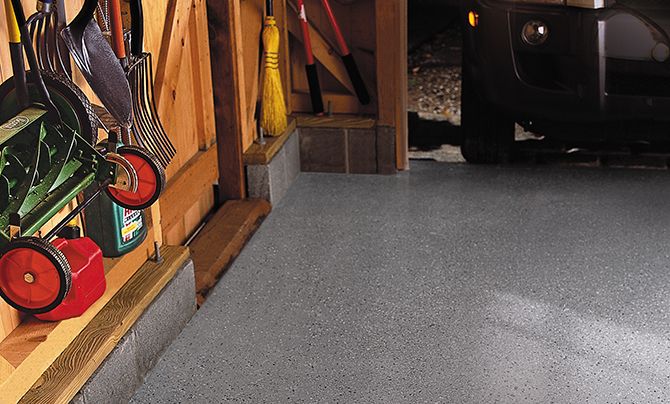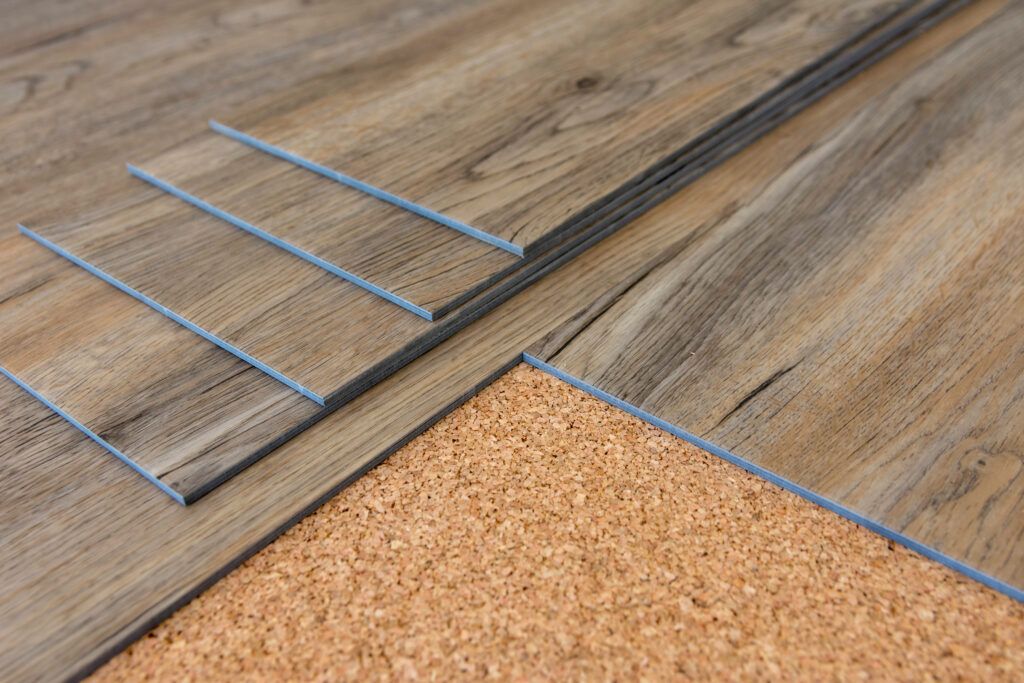We may be compensated if you purchase through links on our website. Our team is committed to delivering honest, objective, and independent reviews on home products and services.
Most basements have a poured concrete floor that’s solid, flat, and durable. But if you’re planning a basement remodeling project—also known as basement finishing—you’ll probably want a flooring upgrade to make the new living space more comfortable.
The good news is that you have plenty of basement flooring options to consider. Better yet, most basement flooring materials are DIY-friendly. But it’s important to remember that conditions in the basement are different from those upstairs. This impacts your flooring choices and how your flooring is installed.
Here, we break down the best flooring options for basements and offer suggestions for putting flooring down yourself.
Fix the Concrete Flooring First
No matter what type of basement flooring you choose, make sure to fix any problems in the original concrete floor first. Is the concrete surface rough or uneven in areas? Are there cracks wide enough to fit a dime? Have any sections of the floor cracked and shifted up or down? Is water coming into the basement during wet weather? This kind of damage should be repaired before any new basement flooring is installed.
Basement Subfloor Options
Next, you’ll lay the first layer of your new floor. Many basement flooring materials—like paint, epoxy, tile, and rubber flooring, for example—can go down directly over the basement’s original poured concrete floor, as long as the concrete is in good condition. But this direct installation can result in a floor that’s cold underfoot.
A cold floor may be tolerable in a workshop or workout room. However, if your remodeled basement will be used as a family room, home theater, or kid’s playroom, you may want to have a subfloor installed over the concrete. A properly installed subfloor will create a flat, insulated substrate for the finished floor of your choice, ensuring more warmth underfoot.
Basements require special subflooring that will not get moldy or deteriorate when exposed to moisture. Different brands of subfloor tiles are available that include a drainage space for any moisture on the concrete, rigid foam insulation, and a composite surface that serves as the substrate for finished flooring.
7 Best Basement Flooring Options
Now you’re ready for the finished floor. The prices given below are for materials and don’t include professional installation. Remember, most of these installations you can do yourself.
1. Paint
Cost: Under $10/square foot for paint and finishing supplies
The least-expensive finished floor option is also the most DIY-friendly. If cost is a priority and if you just plan to use your basement space as a workshop or workout room, then paint may be your best choice.

The important thing here is to choose a paint formulated for concrete floors, and carefully follow the instructions on the can pertaining to surface prep, application, and drying time. One example is this paint from KILZ, which can be bought on Amazon.
2. Epoxy
Cost: DIY kits cost around $120 each
This two-part coating can be applied much like paint, but it creates a thicker layer that’s usually smoother, more durable, and easier to keep clean. With most epoxy treatments, it’s possible to broadcast plastic flakes or fine sand over the surface right after application.
The sand adds texture, while the flakes add both texture and color. Like paint, this flooring treatment can be a good choice for workrooms and home gyms. Just make sure to check the manufacturer’s instructions for safety issues. Some epoxies may produce hazardous fumes during application and curing. Epoxy floor kits for your basement are available for purchase through online retailers like Amazon.

3. Tile
Cost: $0.50-$25/square foot
Installing a tile floor in all or part of your basement lets you have some fun with design while still quickly covering up existing concrete floors.
Tile is available in many different sizes and styles, and the price range is equally broad. If you shop around and do the installation yourself, a tile floor can be surprisingly affordable. But this changes when you opt for pricier material. No matter what tile you choose, make sure that your concrete floor is in good condition. If there are cracks or rough-surfaced areas, these will have to be repaired with a self-leveling sealant like this one before the tile can be installed. If you want a tile floor that isn’t cold underfoot, put down a basement subfloor before you install your tile.
4. Rubber Tile or Rubber Sheets
Cost: $3-$8/square foot for tiles, and $1-$5/square foot for sheet rubber in rolls
You’ve probably seen this resilient flooring in health clubs and gyms, and options like this one from the company Holymus can be purchased on Amazon. It’s a great choice for a playroom or laundry room because it’s durable, waterproof, stain-resistant, and easy to keep clean. Interlocking rubber tiles are easy for homeowners to install, and they can go down directly over concrete or over a subfloor.
The same goes for rubber sheet flooring. Both materials are available in different textured patterns and a range of colors. One drawback that some people notice is an unpleasant odor, but this usually dissipates over time.
5. Vinyl Planks or Tiles
Cost: $2-$7/square foot
This basement flooring option offers great value for the money. Vinyl tile and vinyl plank flooring are easy to install, thanks to interlocking joints. What’s more, you can get these materials in an amazing variety of styles.
This flooring can be made to look like different wood species or to resemble ceramic tile. Most types can be installed over concrete or over a subfloor. Installing a vinyl tile or vinyl plank floor is easier than installing sheet vinyl, and any damage to the floor can be repaired simply by replacing a tile or two.

6. Sheet Vinyl
Cost: $0.75-$4/square foot
Buying a large roll of vinyl can get you a new floor for a very affordable price. Sheet vinyl has other advantages, too—it’s durable, easy to clean, and available in a wide variety of styles and patterns, giving you plenty of choices.
But before you choose this option, consider how you’ll maneuver that big roll into the basement, cut it to size, and fit it accurately between walls. Installation can be challenging.
Sheet vinyl also has another limitation—roughness or irregularities in the basement’s concrete floor are likely to show through in the vinyl floor. This flooring should be installed over a subfloor for the best appearance and a warmer finished floor.
7. Engineered Wood Flooring
Cost: $4-$7/square foot
If you’re aiming for a high-end finished basement room with the look and feel of real wood flooring, there’s good news. Solid wood flooring isn’t suitable for basements, but some engineered wood flooring will work just fine.
Similar to plywood in its composition, this type of flooring has a thin layer of genuine wood bonded to other wood plies or composite boards. Manufactured in planks with interlocking edges, basement-suitable engineered wood flooring comes with a durable, factory-applied finish.
Most types have a thickness of 1/2 inch or less. Although some manufacturers sell engineered wood flooring that can go down over a concrete floor, it’s better to install this type of flooring over a subfloor.
Our Conclusion
Finishing a basement is a great way to add living space to your home. However, you can’t put down just any type of flooring. Use this guide to find the right flooring for your basement and install it properly without having to splurge on professional installation.
